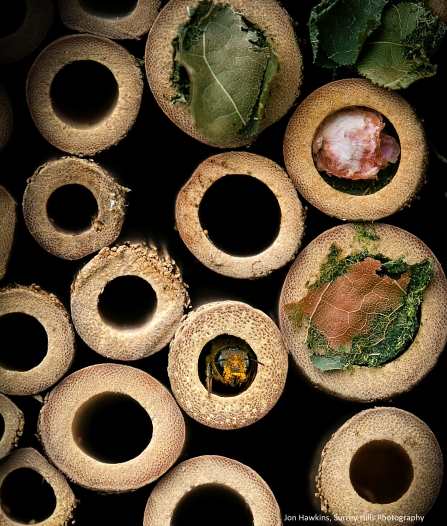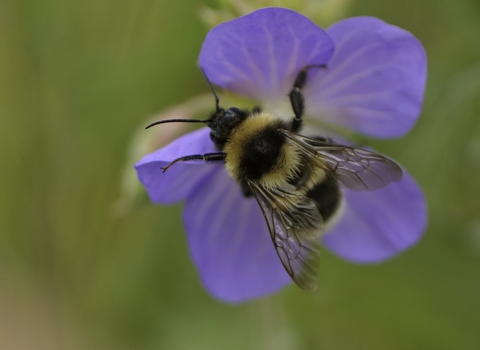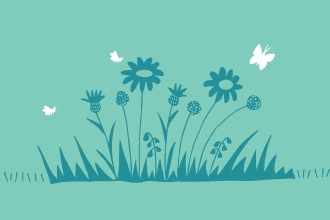
How to make a bee hotel
Unlike the familiar bumblebee and honeybee, most of our bees do not make colonies but are actually solitary. The female spends most of her life searching for suitable nesting sites. Some species will nest in holes in the ground, while others will look for old beetle holes or hollow stems in which to lay their eggs. If you can provide a suitable home, these bees will come to you.
You will need:
- An untreated wooden plank, at least 10 cm wide.
- Plenty of hollow stems of different diameters (including the bees’ preferred 3-5 mm), such as bramble, reed or bamboo. To attract a range of species include 2-10mm diameter holes.
- Saw, drill, screws and secateurs.
- A mirror fixing to hang the finished nest up.
Building your bee hotel:
- Cut the plank into four to make a rectangular frame that the stems will sit inside.
- Drill guide holes for the screws (to stop the wood splitting) and assemble the frame.
- Snip your stems into lengths to fit the frame (as wide as the plank), discarding any bent or knobbly ones. It’s a good idea to include some really big stems (cut with a fine saw), even though they’re no use to the bees; they speed up the assembly stage, look attractive and help shelter lacewings and ladybirds over winter.
- Lay your frame on a tilted surface and carefully pack it with stems. Only as you add the final few does the whole thing suddenly lock solid.
- Finally add a backing board to the bee hotel.
If you can make a bee hotel, the female mason bee will come to you!
Hanging your bee mansion:
Hang your hotel on a sunny wall, sheltered from rain. Remember to clean your hotel once a year to remove any build-up of fungi, debris and parasites.

Jon Hawkins, Surrey Hills Photography
What happens next?
Watch as solitary bees investigate your finished bee hotel in the spring. With any luck, the females will lay their eggs inside the stems of your hotel. Each egg is left with a store of pollen for the grub to eat when it hatches. The egg is sealed up behind a plug of mud, in a ‘cell’, and one stem may end up with several ‘cells’ in it. The young bees will emerge the following year.





